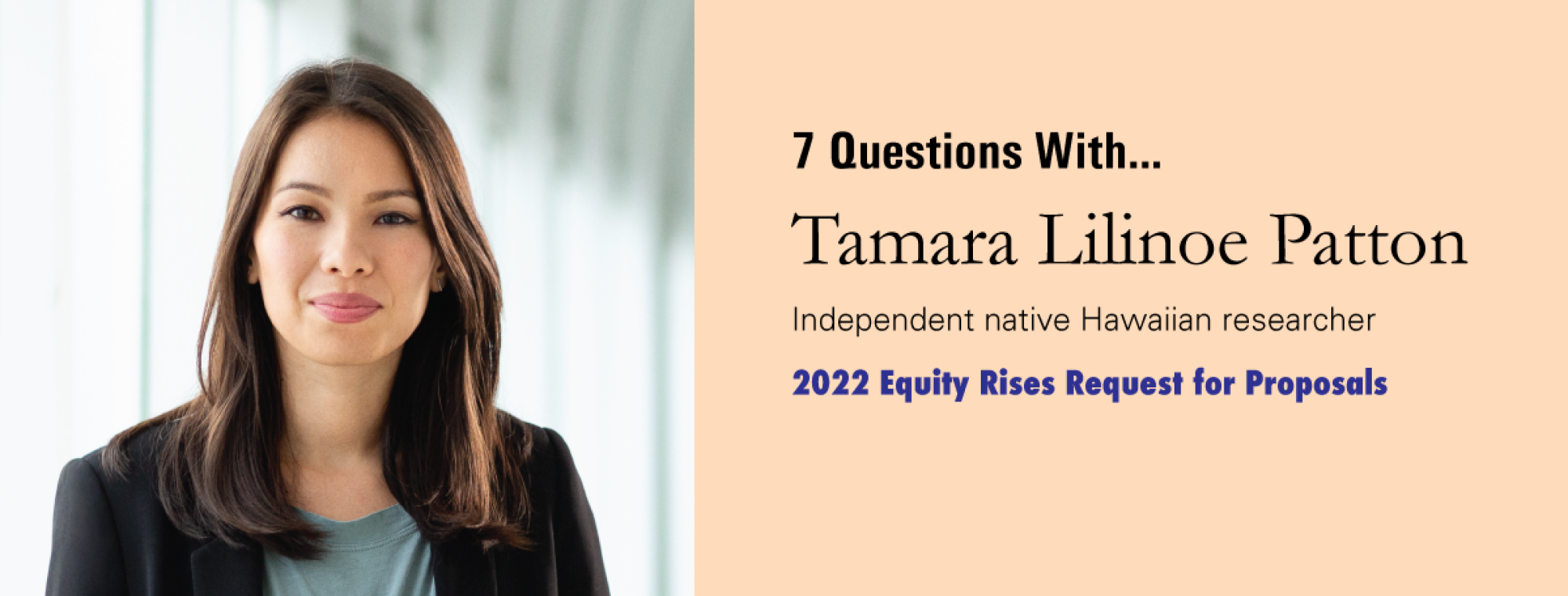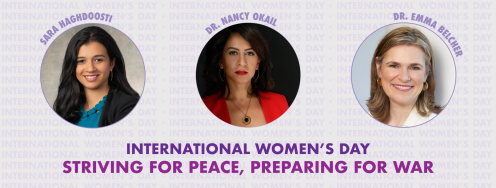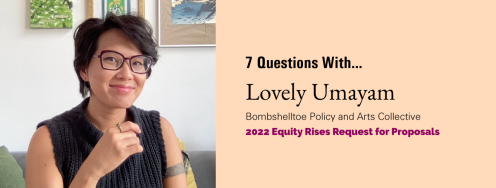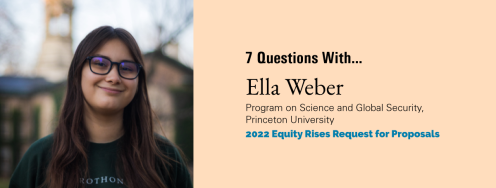Tamara Lilinoe Patton is an independent native Hawaiian researcher focused on imagining security beyond deterrence and militarism. Tamara also is Development and Communications Manager at The Avenue Concept, an organization dedicated to creating dialogue on social issues through public art. This is part of a series of interviews in which you can get to know the grants given under the 2022 Equity Rises Request for Proposals and the people behind all the work.
Question 1: Tell us about your work! What kind of goals do you have? What are you excited about?
My work centers on collective and individual human security from the overlapping perspectives of science, technology, society, and art. This includes elevating Indigenous perspectives to reimagine security beyond deterrence and militarism, the social practices and technologies of peace and security, and the implementation of the Treaty on the Prohibition of Nuclear Weapons. As a Native Hawaiian, I also explore the use of communication and mobilization through public art to support the most vulnerable human beings, especially Indigenous peoples, women, girls, persons of color, and LGBTQ+ individuals. In the near future, I am excited about continuing to use the lens of art to explore new ways of expanding and extending communication and networking around these issues.
Question 2: How do you measure progress?
I tend to measure progress through the spectrum of communication. On one end, issues can be isolated or ignored, whilst on the other, they are discussed and collectively acted upon through coordination of time and resources. I think a big part of our work as researchers, writers, teachers, and activists is to bring vital issues to the fore, especially the rights of marginalized, oppressed, and exploited groups of individuals. An even bigger part of this work is to deepen and intensify communication at the highest levels around these issues to the extent that action is taken to protect individuals and communities, promote healing, and elevate unheard voices.
Question 3: Who or what inspires you?
I am inspired by work that goes beyond analysis to move people – whether that is to move them emotionally as humans, to move them to action, or to allow people to understand the perspectives of others. For example, this is one reason that I was drawn to virtual reality as a tool for research on nuclear policy. By creating worlds and characters that took action to dismantle nuclear weapons, the work went beyond technical education and research to put people (literally) in the shoes of those working to make this happen. I think it brings a different level of understanding to disarmament – that it’s not a farfetched utopian dream, but is something that is a culmination of many small, actionable steps for which we already have a roadmap and blueprints for.
Question 4: You also lent your experience to the virtual reality documentary, On the Morning You Wake (to the End of the World). What was this experience like and what importance do you think the project has on educating people about nuclear threats?
This was an incredible work of art to contribute to, and I felt honored to work with the partners that brought it to life: amazing artists, technologists, speakers, and activists. The virtual reality documentary that emerged helped promote understanding and connection in the face of nuclear threat, by putting people within the story of the false ballistic missile alert on January 13, 2018 in Hawaii. Having grown up in there, my family and friends received the alert, and reached out to me that morning with frantic questions about what to do. It shook me to my core knowing there was little that could be done. Each person that day who received the alert faced terror and the emergence of their deepest desires when faced with the prospect of imminent death – for many this was an urge to be with loved ones and to protect them. We wanted to help elevate this story of those who experienced it because of how it underlined our fundamental and shared humanity in the face of nuclear threats. At the same time, we also wanted to highlight the injustice that people must face these threats in the first place. While we included a variety of voices and perspectives, we also chose to highlight Indigenous voices that have had little say in their own governance and security. Having Native Hawaiian Jamaica Osorio lead this narrative was, in my view, a very powerful way to communicate these lost rights, oppressed dignity, and the need for real change through both disarmament and justice for Indigenous communities.
Question 5: What’s the one thing about the nuclear policy field you wish people knew or would talk about more often?
It’s probably very specific, but I find myself wishing that more people were talking about the preamble of the Treaty on the Prohibition of Nuclear Weapons as a compass and roadmap for our work on nuclear policy. It’s such an incredible feat that there is a treaty that recognizes the severity of harms endured by those impacted by nuclear weapons use and testing; the rights and disproportionate impacts of nuclear weapons on Indigenous peoples, women, and girls; and the ethical imperatives for nuclear disarmament. This treaty goes far beyond a call for nuclear disarmament – it sets an ethical frame, provides steps to get there and elevates marginalized, oppressed, and harmed groups of people.
Question 6: What advice do you have for someone trying to enter the nuclear policy and security field?
My advice to someone interested in entering the nuclear policy and security field would be to question your assumptions and your language to help yourself make a unique, genuine, and helpful contribution. I’ll never forget an event in my early years when I was giving a presentation about US nuclear policy with a first-person perspective. Afterwards, a mentor of mine told me to never use the word “we” even if I’m speaking from the perspective of the country of my citizenship. That simple advice and language tweak helped me to step outside of a nation-state security perspective (wherein the idea is that the security of some matters more that the security of others), to an international and human security perspective. It helped me redirect my work from the foundation that “we” should be we as humans striving for peace and security rather that “we” as citizens of a state.
Question 7: What is the best book you’ve read recently?
This would probably be Women Street Artists: 24 Contemporary Graffiti and Mural Artists from Around the World by Alessandra Mattanza. In my current work for a public art nonprofit promoting dialogue on issues of social justice and representation, I feel inspired by women street artists who use their talent to communicate these issues to the wider public. The book tells the stories of artists like Tatyana Fazlalizadeh who focuses on the revolutionary struggle for the rights of African American women and all genders, Shamsia Hassani who elevates the voices of Afghan women, and Swoon who works to draw attention to women’s rights and human dignity.
I think that we as researchers on nuclear disarmament have a lot to learn from these women. Writing papers is great, but I think real change also stems from creative forms of mass communication, such as street art and graffiti, but also art in its many forms. Our research tends to circulate in bubbles of nuclear experts, and I think forward movement relies on communication and engagement with the wider public. Films, art, and experiences are a great way to help achieve this, and I think the messages should rely not on our differences and debates about policy, but on what we share as humans seeking dignity, peace, and real security.
Seven Questions with Tamara Lilinoe Patton @tamara_patton




